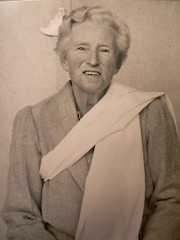Jodo Wasan 2
Those who say the Name while they doubt
The Vow beyond conceptual understanding
Attain birth and abide for five-hundred years
Vainly within a palace; so it is taught.
Doubt
Fetters: Attachments that keep us bound to the endless course of birth-and-death.
Shakyamuni1 lived in times, during which people in his country -- Benares, now in India -- lived as many still do today: within a caste system that grades human beings into classes depending on their birth. I understand that, in those times, people generally believed that by carrying out certain rituals they could amass sufficient merit to enable them to be born into a higher caste. From a Buddhist perspective, it is said that this belief is one of the 'fetters' that bind beings to the cycle of birth-and-death.
The are many fetters but the focus often seems to be on just three of them. These are generally understood to be
- belief in a self (Sk. atman)
- doubt and
- belief in the efficacy of mere ritual.
These three fetters subsist in ignorance (mumyo) or darkness of mind. If they can be relinquished, darkness is vanquished and light will arise.
In this verse Shinran laments the fetter of doubt because, like belief in self and the efficacy of ritual, it imprisons beings in a glorious world of their own creation. The dharma (the Primal Vow of Amida Buddha) is ultimately inconceivable. In other words it cannot be fully contained in our minds as an object except as the Name (Namo Amida Butsu).
When the Name as nembutsu (saying Namo Amida Butsu) is the spontaneous expresson of shinjin, it is no longer a mere ritual act and it liberates beings from all the fetters and the contrivance that keeps them in the thrall of samsara.2
So, what shall we do? If doubt is such a serious obstacle to the Buddhist way, is there some way we can challenge and conquer it?
The Pure Land tradition has discovered, in the teachings handed down through the ages and in the experience of ordinary people, that to entrust oneself to Amida Buddha in the Name (Namo Amida Butsu) is one way that Shakyamuni Buddha taught - and that it is tried and true. As the great Australian Buddhist thinker Marie Byles said towards the end of her long life of profound Buddhist practice:

It is not easy to relax and let go, and plunge into the flood with only a simple phrase as your life-belt and the very-nature-of-things-as-they-are. It is not easy but it is a great relief when you do so.3
Thus, Marie Byles describes relinquishing doubt. Here is the working of the most profound wisdom and light that informs shinjin; and it is this and only this, which can eliminate doubt. We cannot do it ourselves.
1: 'Shakyamuni' is another name for Gautama Buddha (563-483 BCE), and means 'Sage of the Shakya Nation'. Gautama was the principal founder of the cultural, philosophical, speculative and religious movement we call 'Buddhism'. It is properly known as Buddha Dharma.
2: samsara: literally 'wandering'; the cycle of birth and death.
3: Buddhism in Australia, Paul Croucher, p. 73.